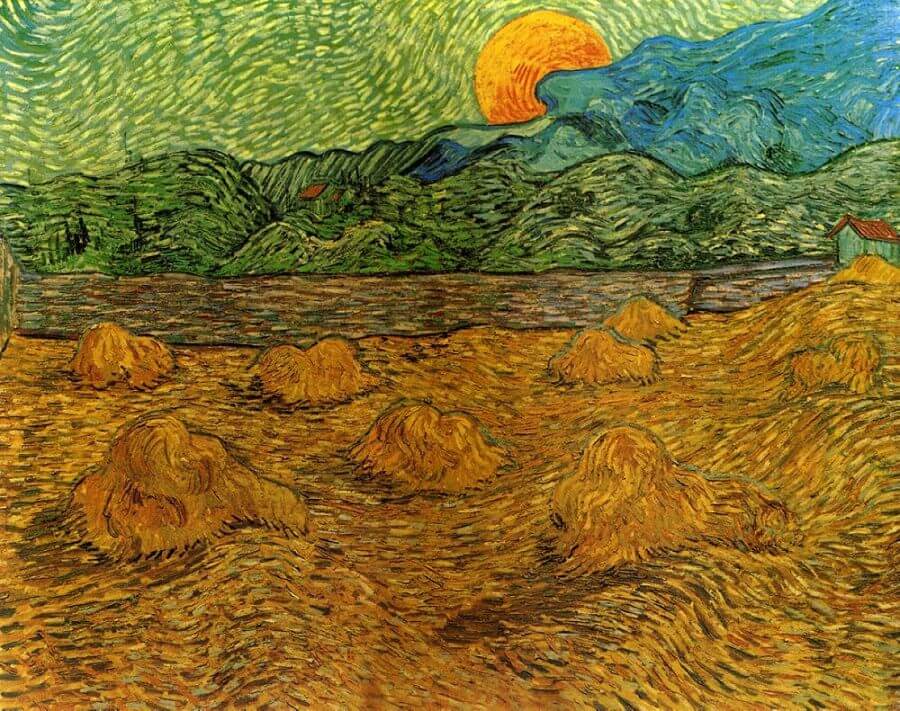Evening Landscape with Rising Moon, 1889 by Vincent Van Gogh

The moon, the sun and the stars were important symbolic elements for Van Gogh who equated their radiating light to religious precepts surrounding the resurrection, redemption and salvation. In this painting the moon in brilliant yellow rises from behind the smoky blue Alpilles mountains, and radiates a light that he has evoked through multiple short strokes of white paint. His use of these short, regular, white strokes was fairly unusual for him, but gives the effect of the dappled moonlight playing across the landscape.
There is great rhythm in this painting that is created through these very precise brushstrokes - every stroke of paint here has a function and builds towards the greater surface pattern across the canvas. His forms are very rounded from the stacks of wheat to the mountains, and this sense of 'roundness' and curvature was something that was characteristic of many of his later works. This painting was done in July 1889, which was when he made his first trip back to Arles from the asylum, and subsequently had his first serious breakdown in Saint-Remy.




















